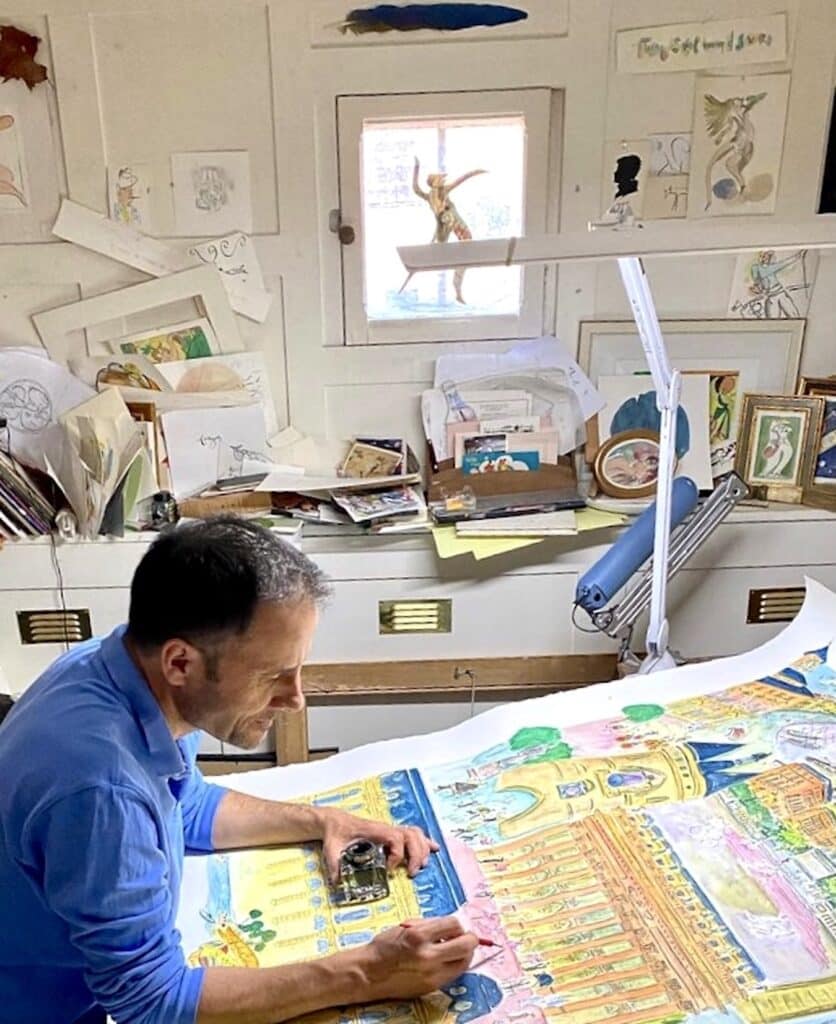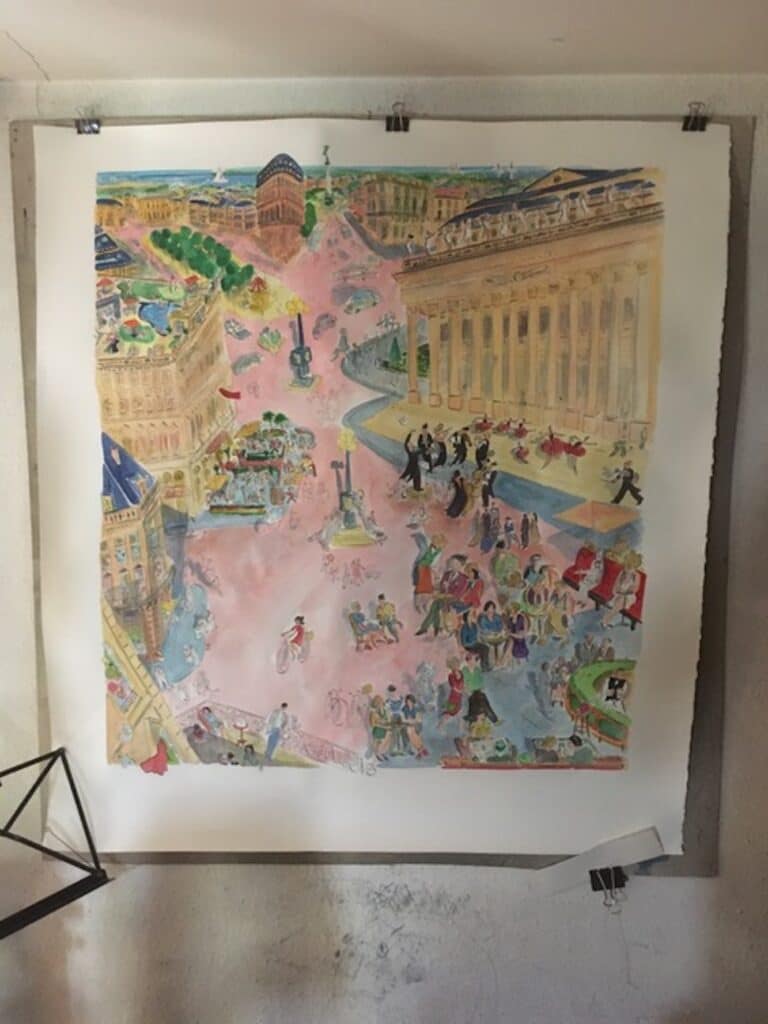Arnaud Faugas, tell us about your career path
After a literary baccalaureate in Bordeaux, I followed my father’s advice and began law school; however, I soon realized this was not to be my vocation, and decided to try my luck in Paris, where some of my friends had gone. As I parked my moped in front of the Cours Florent School of Theater, I let myself be dragged onstage. I never burned up the stage, but did discover a great deal about the expression of feelings, something new for me.
From one stage to another, I left Paris for London, there to learn the language and become familiar with new cultures.
After London came New York, where everything is possible! A few friends and I opened a restaurant on Martha’s Vineyard, an island off the coast of Massachusetts. We worked mostly in the summer, which allowed us plenty of time to travel for several months each year. We would cross paths in London, meet up in Peking by way of Moscow, the world was truly our oyster.
Then, ten years later, it was time to return to Bordeaux.
You are self-taught; how did you discover that you knew how to draw? Do you have any particular influences?
I still wonder what led me, one day in 1992, to go into my neighborhood newsstand and buy a sketchpad, a pen, a bottle of ink and a child’s watercolor set; and with these instruments to produce my first drawings. Two years later I had my first exhibit at the Cité Mondiale in Bordeaux, and haven’t stopped exhibiting since then, several times per year.

I didn’t make my fortune overseas, but I brought back with me a precious memory of reading The New Yorker magazine. Its unusual tone, which mixes literature and illustration, freed my approach to subjects and helped me to find my own style.
I fell under the spell of Hirschfeld and Steinberg, both of whom worked for The New Yorker, and their descriptions of American life.
Although not wanting to re-create New York in Bordeaux, I wanted to treat my city as though it were a living being, vibrant and full of spirit.
Do you draw or are you a painter? Where is the borderline?
I am an illustrator who tells little stories in color. But I also like India ink alone, because it magnifies the black and the white and is a symbolic link between drawing and writing.
Consider a Chinese ideogram, is it just writing, or a work of art?
For me, drawing is like my bicycle, there is no preparation, it’s just there leaning up against a wall, hop on and start pedaling! Everything fits in my pocket; a pencil, a few tubes of colors, a pen. My hand is light and free.
The city of Bordeaux has been a recurring theme since your beginnings; do you think you will ever get tired of it?

In my head is a Bordeaux that is a sort of musical comedy, where everything dances and twirls, even the building façades look a bit like a theater décor.
In drawing, I over-interpret: everything is exaggerated, the past blends into the present, and then I have some fun slipping in a few surprises to be discovered by those who look closely.
What would you like to say to us with your painting? Do you have a particular message?
My drawings are pretty talkative by themselves. If you stop in front of them they will tell you: take some time (for a coffee on a terrace), start a discussion (with a passer-by that you meet), smile (at the blue sky, at the sun, at a pretty girl), garb yourself in color, fantasy, lightness. If I had to give a message it would be; “Know how to take hold of the colorful moments life offers us.” There are a lot more of them than we think. We have to be able to take off the glasses that we sometimes wear that make us see everything in dull shades of gray.
You worked for ten years before embarking on large-scale paintings. Why wait so long?
What is more natural than to have different desires according to the moments? I like to change formats and vary the subjects. I enjoy just as much drawing landscapes as sketching portraits of musicians, doing a book on les Fables de la Fontaine or painting a crowd of jubilant people. The large-scale works are intoxicating, intense, they are more than just an image that winks at you as you pass by: they have a way of enveloping you that is enchanting and irresistible. The composition must be well thought-out, the different elements must work together, afterwards it’s just a matter of adding in the details. Working on a larger surface demands more reflection, but without losing the freshness and
spontaneity. Going large is also the simple desire to be seen “for real”!
Do you prefer working to order or free creation?
Free creation is – a good day’s work finished, I do a little drawing on a piece of paper that happens to find itself under my pencil, and when it is finished, it makes me smile. It’s having no constraints, the time passing, the inspiration that comes and goes. Sometimes it takes you far, but also brings you back to shore. It is mischievous and elusive; you just have to give it time, a rare commodity these days. It also brings surprises; every day I can be astonished by what I have done!
A customer’s order is different; I find it very stimulating. I bring my own vision to the subject that is proposed. It’s an exchange of ideas and interpretations. Then come the first trials, and what satisfaction it is when my drawings delight them! And in all these moments, I enjoy the people that I meet through my paintings.
